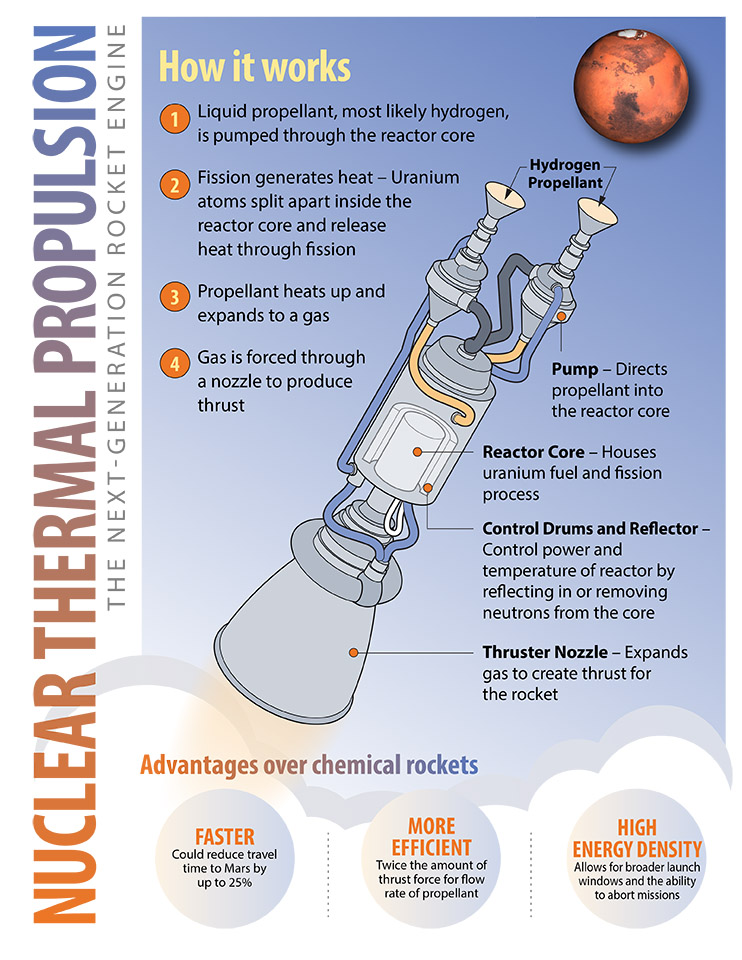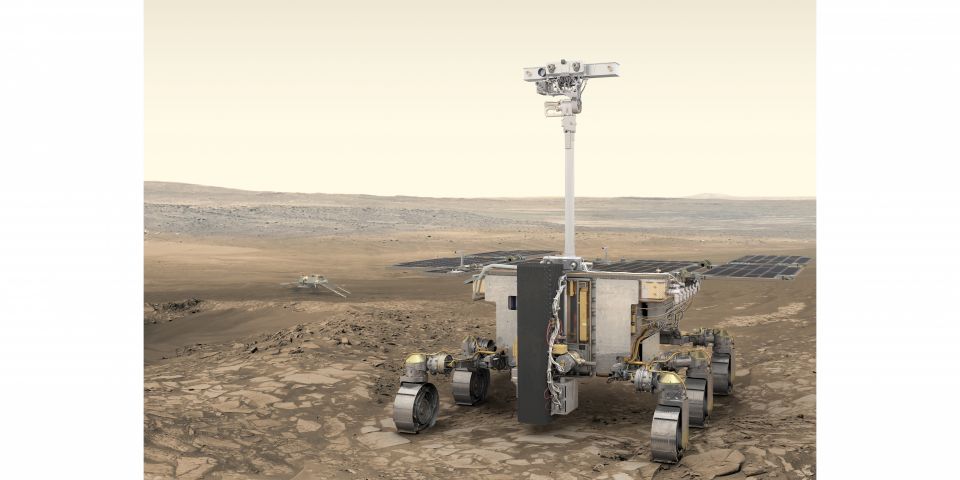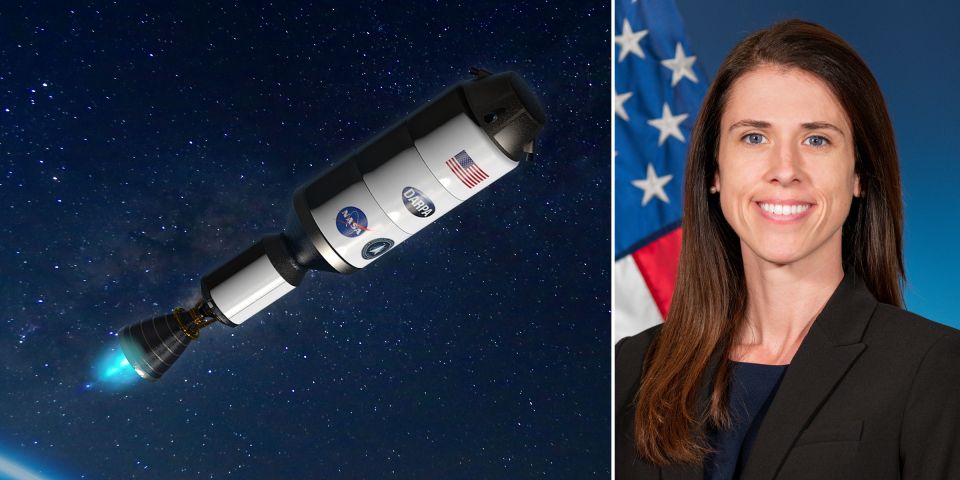Nuclear thermal propulsion may finally take off for space flight
A “resurgence of interest” in nuclear propulsion for space missions is described in a new article authored by science writer Jon Kelvey for the American Institute of Aeronautics and Astronautics’ (AIAA’s) Aerospace America website. The focus of Kelvey’s article is nuclear thermal propulsion (NTP), which, according to the Department of Energy, “could significantly reduce travel times and carry greater payloads than today’s top chemical rockets—giving humans a great chance of exploring deep space.”

A nuclear thermal propulsion infographic prepared by the DOE Office of Nuclear Energy. (Source: DOE)
DARPA and NASA: Kelvey notes that the Defense Advanced Research Projects Agency, with its Demonstration Rocket for Agile Cislunar Operations program (DRACO), is planning to fly an NTP-powered spacecraft in orbit by about 2026, and NASA is planning to demonstrate an NTP system in space by the early 2030s. DRACO “could serve as the basis of a Space Force fleet of NTP rocket upper stages that could push big satellites around,” according to the article; the NTP systems are envisioned for “pushing big payloads to geosynchronous orbit and beyond quickly, building moon bases, and going to Mars.”
Atomos Space: Regarding a possible future crewed mission to Mars, an NTP-powered vehicle would be able to carry astronauts there in four to six months, compared with the nine months that would be required with conventional chemical propulsion. The faster travel time is important in order to minimize astronauts’ exposure to high-energy cosmic radiation.
In terms of NTP applications for satellites, Denver-based company Atomos Space is working on it. The company is currently developing an NTP space tug for delivering satellites to higher orbits after launch, “though the company will likely use solar-electric propulsion in the short term,” according to Kelvey.
Advantages: NTP systems have edges over conventional chemical propulsion such as an ability to produce both higher thrust and higher specific impulse than chemical rockets. “Crucially, there is no combustion involved in NTP,” says Kelvey. “Cryogenic hydrogen is superheated by the reactor but doesn’t burn, removing the need for carrying the extra mass of an oxidizer. . . . You could therefore launch a powerful NTP upper stage on a smaller conventional rocket.”
History lesson: Kelvey describes early forays into nuclear-powered spaceflight, such as the Project Rover program from 1955 to 1973 to design a rocket engine running on nuclear energy. Project Rover was part of the Nuclear Engine for Rocket Vehicle Application (NERVA) program. The project, based at Los Alamos National Laboratory, was cancelled when “national priorities changed” during the “post-moon-landing malaise.” Nevertheless, the NERVA reactor and engine “functioned well in at least six ground tests between 1964 and 1969, producing around 1,100 megawatts of power on average,” Kelvey explains.
In the late 1980s and early 1990s, a new NTP rocket program was pursued as part of the Strategic Defense Initiative and Air Force Space Nuclear Thermal Propulsion project. But that NTP program was canceled in 1994.
Heat challenge: For the new research being conducted into NTP systems today, there are a number of challenges. Kelvey sees the most difficult being the degradation of engine components caused by the extreme heat required for NTP systems. Quoted is Paolo Venneri, the manager of advanced technologies at Ultra Safe Nuclear: “The outlet temperature of the reactor is something on the order of 3,000 Kelvin, or 2,700 Celsius. Today, there’s no nuclear fuel that can operate at that temperature for the desired period of time.”
Safety perceptions: Another challenge concerns public perceptions of safety problems associated with nuclear reactors and radioactive materials on rockets. Kelvey notes protests that occurred in 1997 when the Cassini spacecraft was launched on its mission to Saturn with plutonium pellets inside its radioisotope thermoelectric generator.
To alleviate these safety worries, technologies—such as a neutron-absorbing control rod—can be employed to ensure that the nuclear reactor in an NTP rocket will not be turned on during launch or during an accident on the launch pad, ensuring that the reactor will not become operational and radioactive until the spacecraft reaches orbit. It’s just another challenge facing nuclear for space applications, but momentum seems to be on the side of NTP technology.









